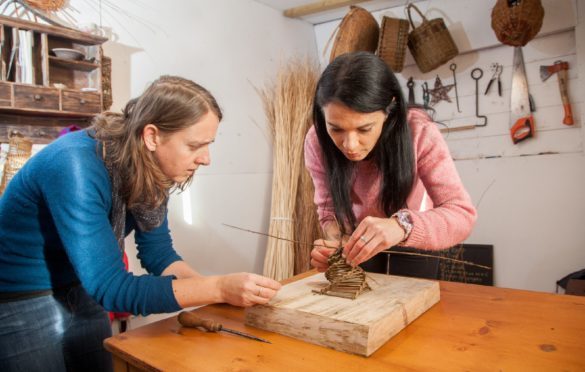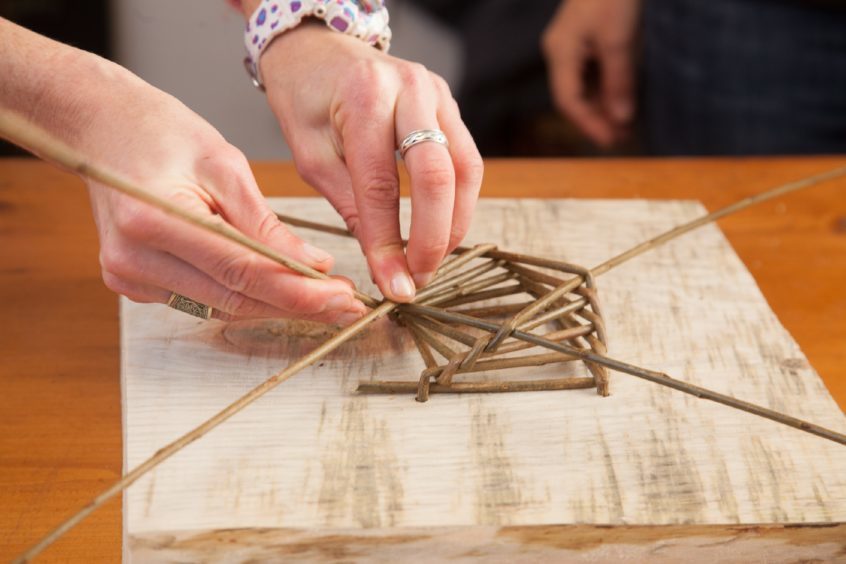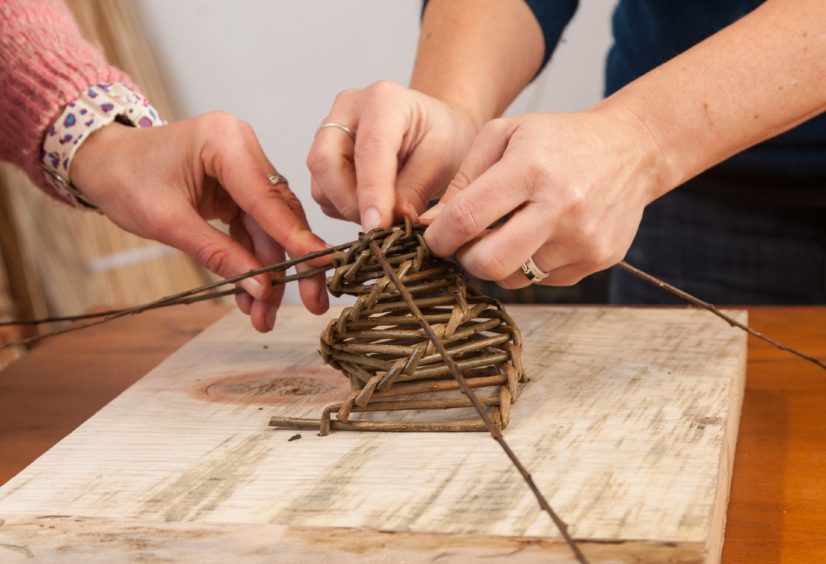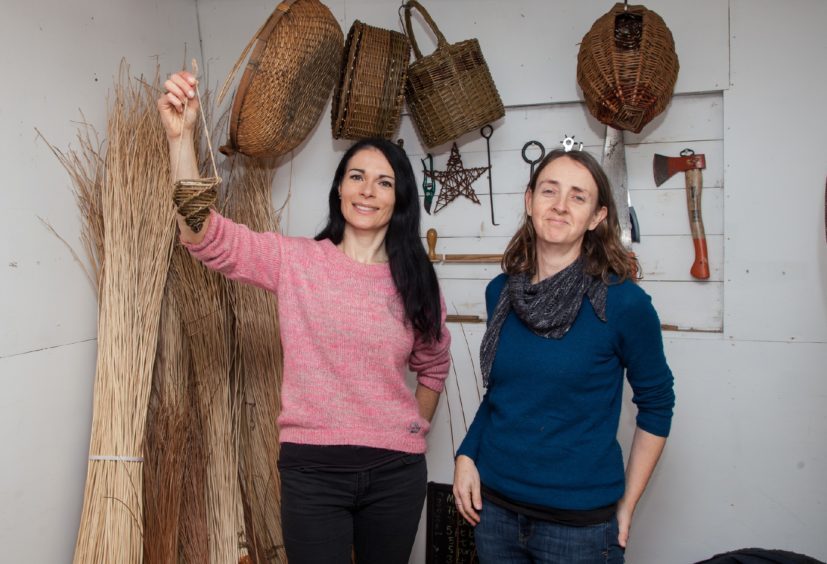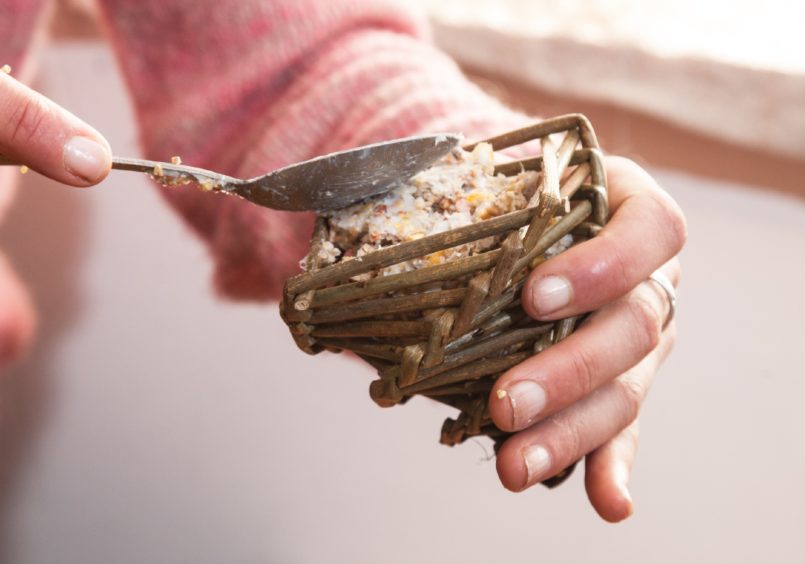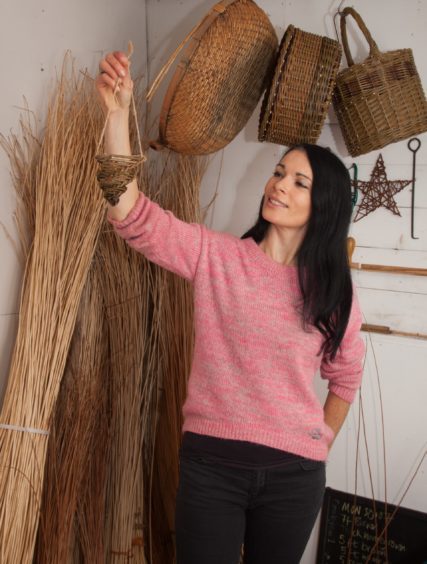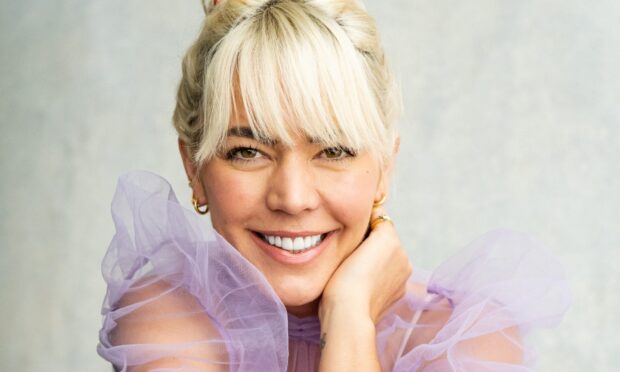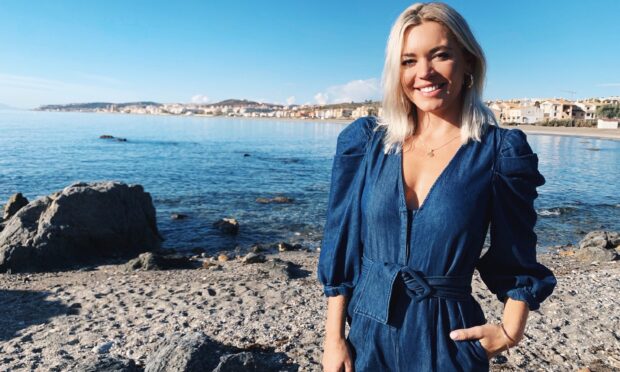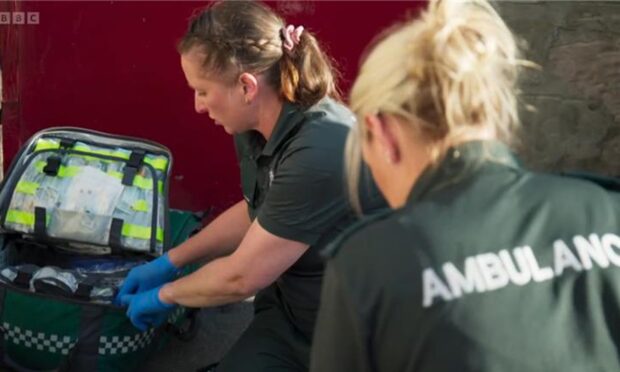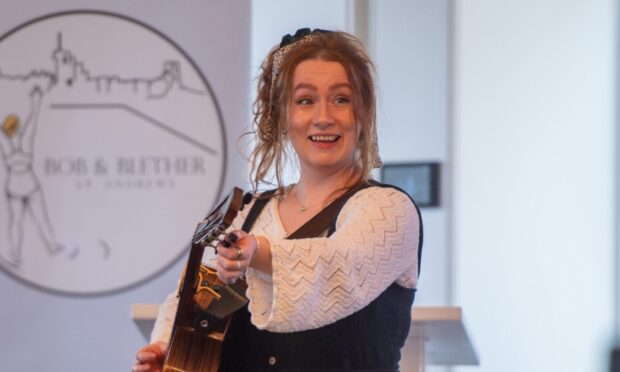Want the birds to flock to your garden? Gayle joins a willow weaving workshop and makes a feeder that’s popular with all sorts of species
It hangs from an elder tree in my garden, it’s filled with a heady mix of lard and seed, and I’m very proud to say that I made it myself.
Most importantly, the birds are loving it.
This fab wee feeder took me less than an hour to make, under the watchful eye of Forfar-based willow weaver Rachel Bower.
It’s one of the more simple structures that Rachel, 46, makes in her Forfar workshop, and it’s a good starting point for a beginner like me.
With 15 years of willow weaving behind her, she is an expert in the craft and produces everything from stunning sculptures to plant climbers, trays and platters and a wide range of baskets.
Today we’re using “Brittany Green”, a slender variety of willow which becomes supple when soaked, and hence, is popular in the basketry world.
Rachel sourced this species from Somerset but she’s just started to grow her own willow in Kirriemuir – and 2018 will be the first year it’s harvested.
“The rods we’re using today are a year’s growth,” explains Rachel, gently pushing one into a wooden mold.
“They were soaked for five days in cold water and then wrapped in a blanket to allow them to mellow for a further day before they were ready to use.
“The wooden mold holds four upright rods in place while we begin a horizontal weave with a fifth rod.”
I’m one of these people who can become slightly dyslexic when instructions are given, even simple ones, and I need Rachel’s help to kick-start the process.
When the four uprights are in place, we kink them down to join the fifth one in a repeated spiral weave until the rods meet together at the top.
It’s not that easy to explain – a diagram would probably be better – so the best advice is to get a tutorial from Rachel or join one of her workshops.
As I keep on weaving, my feeder slowly begins to spiral into shape, and with a little bit of help (quite a lot, truth be told!), I end up with a fantastic design.
I then spoon in a sticky yet solid mixture of lard and bird seeds that Rachel has made earlier in the day. Rustic, yes, but what else would you want from a bird feeder?
Once we’ve removed it from the mold, we trim off excess and tatty bits of willow, tie on a piece of string and Bob’s your uncle.
I’m so impressed with my feeder that I pledge to sign up to another of Rachel’s workshops, perhaps one where I can cobble together something a little more complicated.
Her distinctive style combines traditional techniques with a contemporary edge, and she often adds locally coppiced hazel into her final designs.
“With a background in horticulture and an interest in making from an early age, willow was a perfect bridge between the two for me,” says Rachel.
“Being involved in the whole process of the craft from the growing, harvesting, drying and soaking of the willow is as important to me as weaving the final piece.”
A quick peek on Rachel’s Instagram shows a wide range of fantastic designs. I’m particularly impressed by a sculpture of a willow hen, willow ducks with driftwood heads, hazel sticks wrapped in willow, red dogwood and dyed hemp string, and a funky willow handbag. There are also some bird feeders very much like mine, as well as more intricate designs.
Back home, I hang my new feeder to the branch of an elder tree in the garden, alongside some peanut feeders, and wait.
I don’t have to wait long – birds of all shapes and sizes flock to it and start pecking away at the feed before I’m even back in the house.
Among the feasting hordes are blue tits, wrens, a robin and a woodpecker, which continue to scoff away and provide me with entertainment.
I’ll just need to ensure I keep the feeder topped up but the sense of satisfaction that comes from seeing so many birds is more than worth it.
info
Follow Rachel on Instagram and Facebook, (www.instagram.com/wovenwillowwork/) to see her work and keep up with future events or email wovenwillow@gmail.com.
She takes part in local pop up and Open Studio events where people can visit and get an insight into the craft. She runs workshops on everything from bird feeders through to basket making.
When she’s not working with willow, Rachel works for woodlands.co.uk, a company that works to conserve UK woodlands by helping people to buy their own to enjoy and look after.
